-
 Bitcoin
Bitcoin $83,301.7640
-2.11% -
 Ethereum
Ethereum $1,799.9842
-4.25% -
 Tether USDt
Tether USDt $0.9999
0.00% -
 XRP
XRP $2.0278
-4.59% -
 BNB
BNB $596.2228
-1.03% -
 USDC
USDC $1.0001
0.01% -
 Solana
Solana $116.8645
-7.35% -
 Dogecoin
Dogecoin $0.1617
-6.43% -
 Cardano
Cardano $0.6450
-5.42% -
 TRON
TRON $0.2321
-2.68% -
 Toncoin
Toncoin $3.6664
-9.62% -
 UNUS SED LEO
UNUS SED LEO $9.4145
0.16% -
 Chainlink
Chainlink $12.8328
-5.91% -
 Stellar
Stellar $0.2589
-3.37% -
 Avalanche
Avalanche $18.1600
-6.54% -
 Sui
Sui $2.2723
-8.51% -
 Shiba Inu
Shiba Inu $0.0...01214
-1.89% -
 Hedera
Hedera $0.1611
-4.12% -
 Litecoin
Litecoin $82.9489
0.17% -
 Polkadot
Polkadot $3.9725
-3.23% -
 MANTRA
MANTRA $6.2949
0.51% -
 Bitcoin Cash
Bitcoin Cash $302.6917
-1.17% -
 Bitget Token
Bitget Token $4.5396
-1.25% -
 Dai
Dai $1.0000
0.00% -
 Ethena USDe
Ethena USDe $0.9998
-0.01% -
 Pi
Pi $0.6249
-7.33% -
 Monero
Monero $213.0395
-1.33% -
 Hyperliquid
Hyperliquid $11.5526
-14.44% -
 Uniswap
Uniswap $5.9462
-2.98% -
 Aptos
Aptos $5.2007
-2.20%
What is a 51% attack on blockchain?
A 51% attack occurs when an entity gains control over half of a blockchain network's hashrate, enabling it to manipulate transactions and potentially disrupt the network.
Feb 18, 2025 at 10:18 am
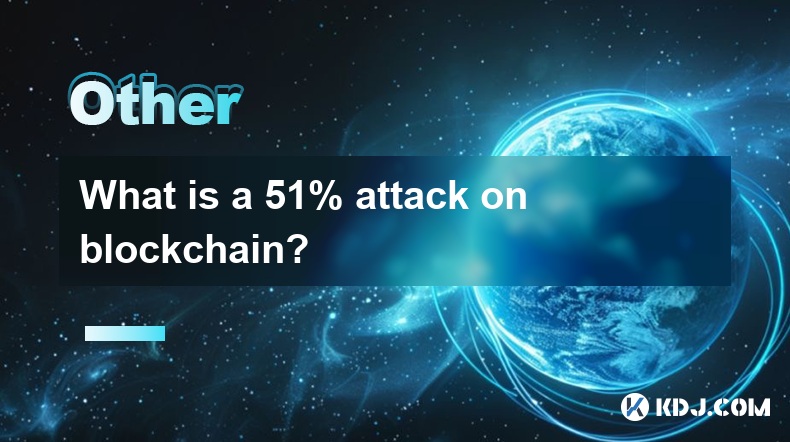
Key Points of a 51% Attack on Blockchain
- Explanation of a 51% attack in the cryptocurrency industry
- Potential consequences of a 51% attack on a blockchain network
- Ways to mitigate the risks of a 51% attack on a blockchain network
What is a 51% Attack on Blockchain?
A 51% attack on blockchain happens when a single entity gains control over half of the network's hashrate, enabling them to manipulate the network and reverse confirmed transactions. This can have severe implications on the security and integrity of the blockchain.
To maintain the integrity of a blockchain network, decentralized consensus mechanisms like Proof-of-Work (PoW) are employed. Miners validate transactions and add new blocks to the chain by solving complex mathematical puzzles.
An entity with 51% of the network's hashrate could manipulate the blockchain in several ways:
- Double-Spending: Reverse confirmed transactions and spend the same coins twice.
- Block Withholding: Prevent new blocks from being added to the chain, disrupting network activity.
- Chain Reorganization: Revert the blockchain to an earlier state, potentially erasing recent transactions.
Potential Consequences of a 51% Attack on a Blockchain Network
A successful 51% attack on a blockchain network can lead to significant consequences, including:
- Loss of funds: Double-spending can lead to users losing their cryptocurrency balances.
- Disruption of services: Block withholding can disrupt smart contract execution and DApp functionality.
- Network instability: Chain reorganization can create uncertainty and confusion among network participants.
- Reputational damage: A successful attack can damage the reputation of the blockchain project and its underlying technology.
Ways to Mitigate the Risks of a 51% Attack on a Blockchain Network
Several measures can be implemented to reduce the likelihood and impact of a 51% attack:
- Decentralization: Distributing hashrate across multiple miners makes it harder for any single entity to gain control.
- Proof-of-Stake (PoS) Consensus: PoS mechanisms reduce the need for excessive hashrate, making 51% attacks more expensive.
- Directed Acyclic Graph (DAG) Architectures: DAG-based blockchains can make 51% attacks computationally infeasible.
- Transaction Confirmation Thresholds: Requiring multiple confirmations before a transaction is considered final can mitigate the impact of double-spending.
- External Audits and Security Reviews: Regular audits and reviews can identify potential vulnerabilities and improve network security.
FAQs Related to 51% Attacks on Blockchain
Q: What is the likelihood of a 51% attack on a major blockchain network like Bitcoin?
A: The probability of a 51% attack on a well-established blockchain with a large hashrate and decentralized network is considered very low.
Q: If a 51% attack occurs, what can users do to protect their assets?
A: In the event of a 51% attack, users should remain vigilant and monitor their accounts for unauthorized transactions. They may consider moving their assets to a more secure wallet or exchange.
Q: Are there any specific blockchain networks that are particularly vulnerable to 51% attacks?
A: Smaller, less established blockchain networks with a low hashrate are more susceptible to 51% attacks. Miners with significant hashrate may be able to gain control of these networks relatively easily.
Q: Can a 51% attack compromise the integrity of a blockchain's smart contract functionality?
A: Yes, a 51% attacker could potentially manipulate smart contract execution by reversing or modifying transactions that trigger smart contract actions.
Q: What is the role of blockchain governance in preventing 51% attacks?
A: Blockchain governance mechanisms, such as multi-signature arrangements and decentralized voting protocols, can help prevent malicious actors from gaining excessive control over the network and potentially launching a 51% attack.
Disclaimer:info@kdj.com
The information provided is not trading advice. kdj.com does not assume any responsibility for any investments made based on the information provided in this article. Cryptocurrencies are highly volatile and it is highly recommended that you invest with caution after thorough research!
If you believe that the content used on this website infringes your copyright, please contact us immediately (info@kdj.com) and we will delete it promptly.
- Sentient Launches Open-Source Deep Search (ODS), a New Era for Artificial Intelligence
- 2025-04-03 18:45:13
- Qubetics ($TICS), ImmutableX, and Filecoin Are Top 3 Cryptos to Buy in 2025
- 2025-04-03 18:45:13
- Bitcoin Market Momentum Stalled After US President Donald Trump Announced New Tariffs
- 2025-04-03 18:40:12
- Game Development Firm Enish Buys the Dip, Investing ¥100M in Bitcoin
- 2025-04-03 18:40:12
- The Memecoin Market Continues to Draw In Capital from Both Retail and Institutional Investors
- 2025-04-03 18:35:13
- The Erstwhile-Popular Memecoin, $PWEASE, Finds Its Market Cap and Holder Base Sinking
- 2025-04-03 18:35:13
Related knowledge
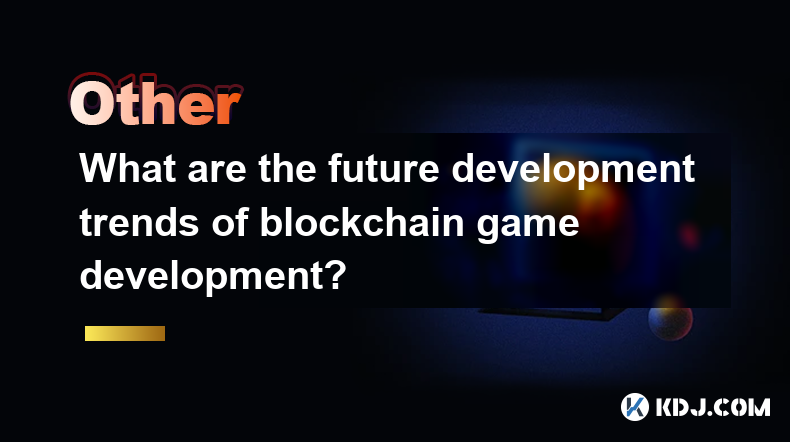
What are the future development trends of blockchain game development?
Apr 03,2025 at 05:00am
Blockchain technology has revolutionized various industries, and gaming is no exception. As we look to the future, several trends are set to shape the development of blockchain games. These trends not only promise to enhance the gaming experience but also to integrate blockchain technology more seamlessly into the gaming ecosystem. Let's explore these t...
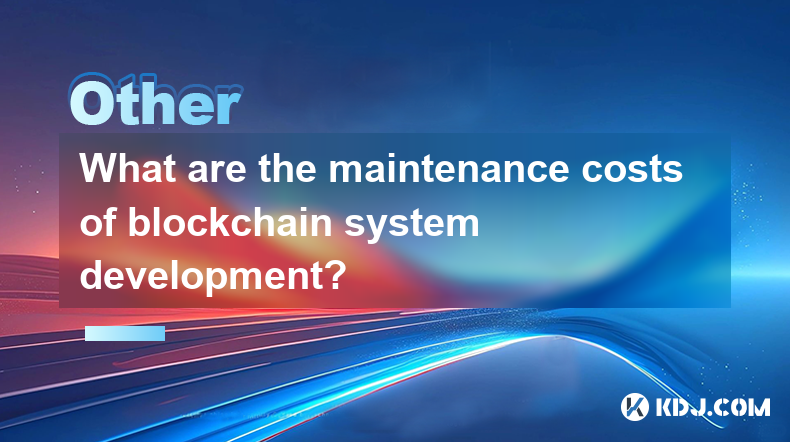
What are the maintenance costs of blockchain system development?
Apr 03,2025 at 06:07pm
The maintenance costs of blockchain system development are multifaceted and depend on various factors. These costs can include technical maintenance, security updates, infrastructure expenses, and personnel costs. Understanding these elements is crucial for anyone planning to develop or maintain a blockchain system. Technical MaintenanceTechnical mainte...
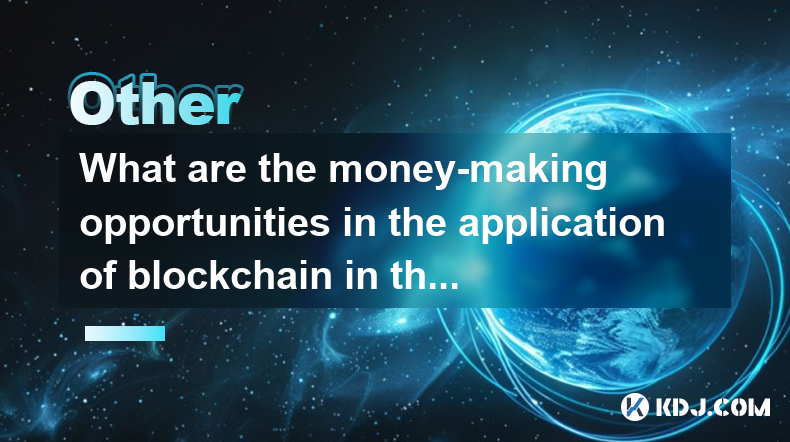
What are the money-making opportunities in the application of blockchain in the medical industry?
Apr 03,2025 at 03:35am
The integration of blockchain technology into the medical industry presents a myriad of money-making opportunities that can revolutionize healthcare systems. Blockchain's inherent characteristics, such as transparency, security, and immutability, make it an ideal solution for various medical applications. By leveraging blockchain, companies can develop ...
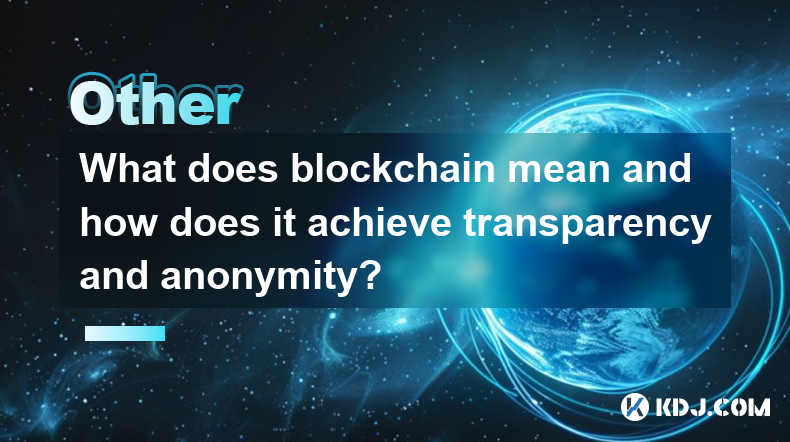
What does blockchain mean and how does it achieve transparency and anonymity?
Apr 03,2025 at 11:28am
Blockchain technology is a decentralized, distributed ledger that records transactions across numerous computers. It ensures that once data is recorded, it cannot be altered retroactively without the alteration of all subsequent blocks and the consensus of the network. This technology underpins cryptocurrencies like Bitcoin and Ethereum, providing a sec...
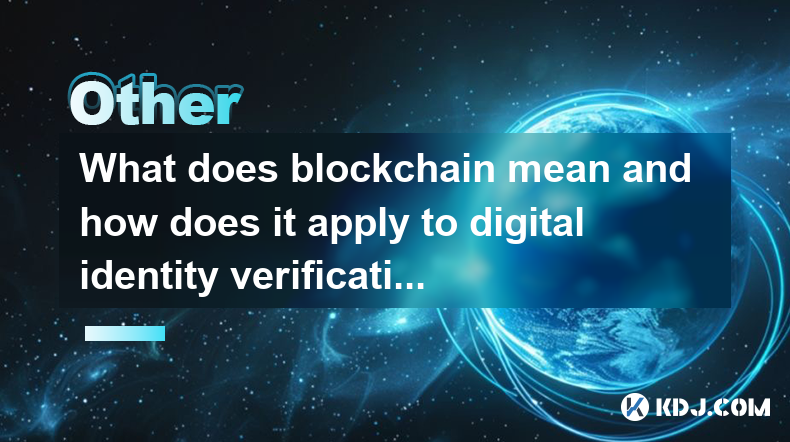
What does blockchain mean and how does it apply to digital identity verification?
Apr 03,2025 at 02:21am
Blockchain technology, at its core, is a decentralized and distributed digital ledger used to record transactions across numerous computers. This ensures that the recorded data cannot be altered retroactively without the alteration of all subsequent blocks and the consensus of the network. The concept of blockchain was initially devised for the digital ...
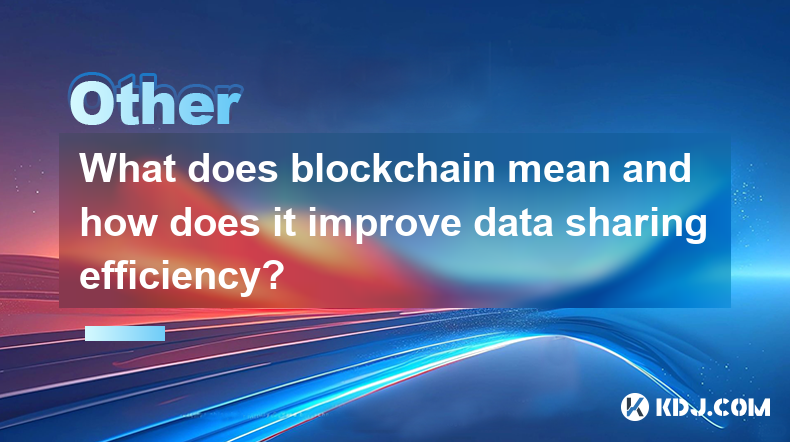
What does blockchain mean and how does it improve data sharing efficiency?
Apr 03,2025 at 03:15pm
Blockchain is a decentralized and distributed digital ledger technology that records transactions across numerous computers. This technology ensures that once data is recorded, it cannot be altered retroactively without the alteration of all subsequent blocks and the consensus of the network. This characteristic makes blockchain highly secure and transp...

What are the future development trends of blockchain game development?
Apr 03,2025 at 05:00am
Blockchain technology has revolutionized various industries, and gaming is no exception. As we look to the future, several trends are set to shape the development of blockchain games. These trends not only promise to enhance the gaming experience but also to integrate blockchain technology more seamlessly into the gaming ecosystem. Let's explore these t...

What are the maintenance costs of blockchain system development?
Apr 03,2025 at 06:07pm
The maintenance costs of blockchain system development are multifaceted and depend on various factors. These costs can include technical maintenance, security updates, infrastructure expenses, and personnel costs. Understanding these elements is crucial for anyone planning to develop or maintain a blockchain system. Technical MaintenanceTechnical mainte...

What are the money-making opportunities in the application of blockchain in the medical industry?
Apr 03,2025 at 03:35am
The integration of blockchain technology into the medical industry presents a myriad of money-making opportunities that can revolutionize healthcare systems. Blockchain's inherent characteristics, such as transparency, security, and immutability, make it an ideal solution for various medical applications. By leveraging blockchain, companies can develop ...

What does blockchain mean and how does it achieve transparency and anonymity?
Apr 03,2025 at 11:28am
Blockchain technology is a decentralized, distributed ledger that records transactions across numerous computers. It ensures that once data is recorded, it cannot be altered retroactively without the alteration of all subsequent blocks and the consensus of the network. This technology underpins cryptocurrencies like Bitcoin and Ethereum, providing a sec...

What does blockchain mean and how does it apply to digital identity verification?
Apr 03,2025 at 02:21am
Blockchain technology, at its core, is a decentralized and distributed digital ledger used to record transactions across numerous computers. This ensures that the recorded data cannot be altered retroactively without the alteration of all subsequent blocks and the consensus of the network. The concept of blockchain was initially devised for the digital ...

What does blockchain mean and how does it improve data sharing efficiency?
Apr 03,2025 at 03:15pm
Blockchain is a decentralized and distributed digital ledger technology that records transactions across numerous computers. This technology ensures that once data is recorded, it cannot be altered retroactively without the alteration of all subsequent blocks and the consensus of the network. This characteristic makes blockchain highly secure and transp...
See all articles























































































